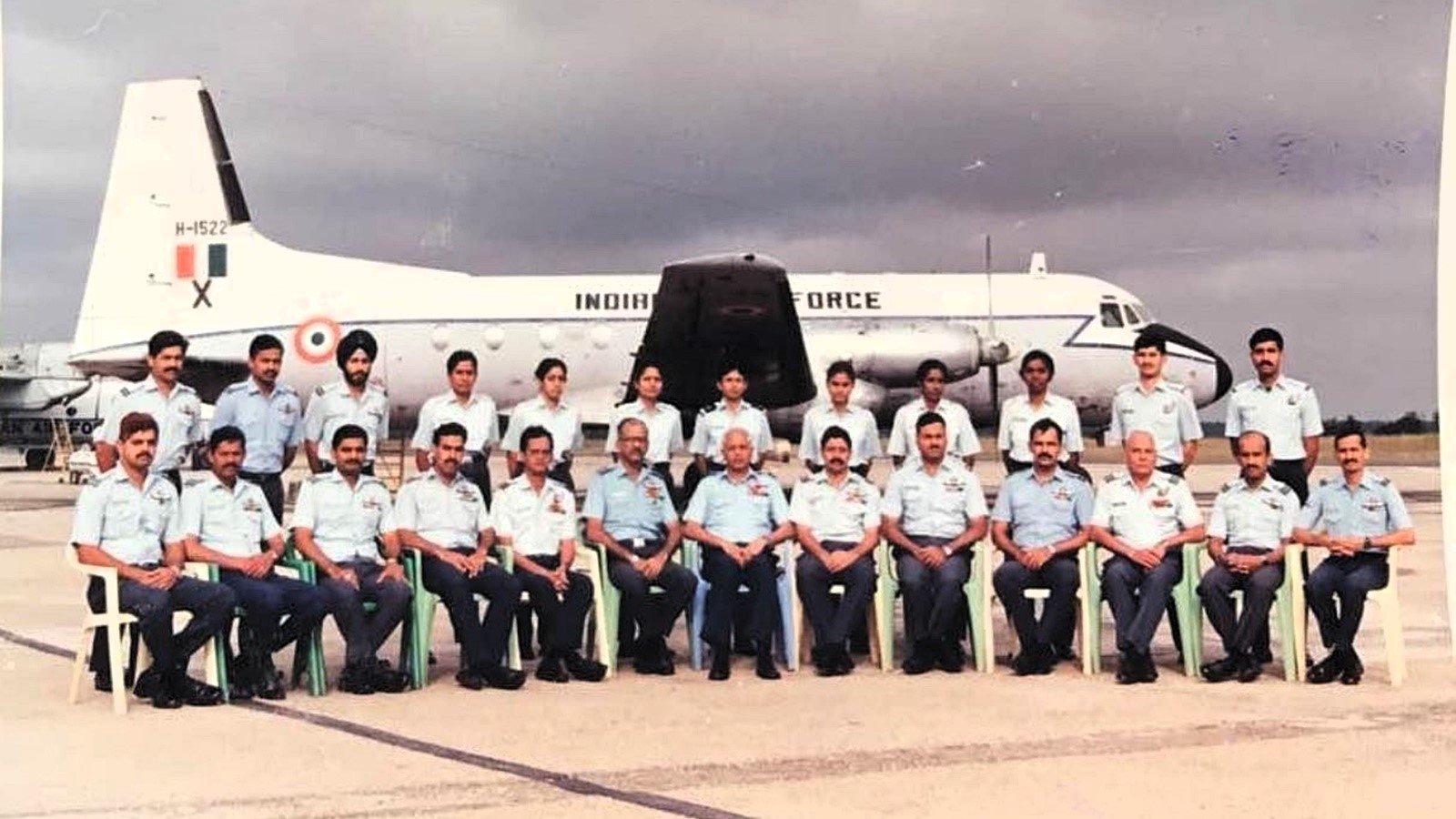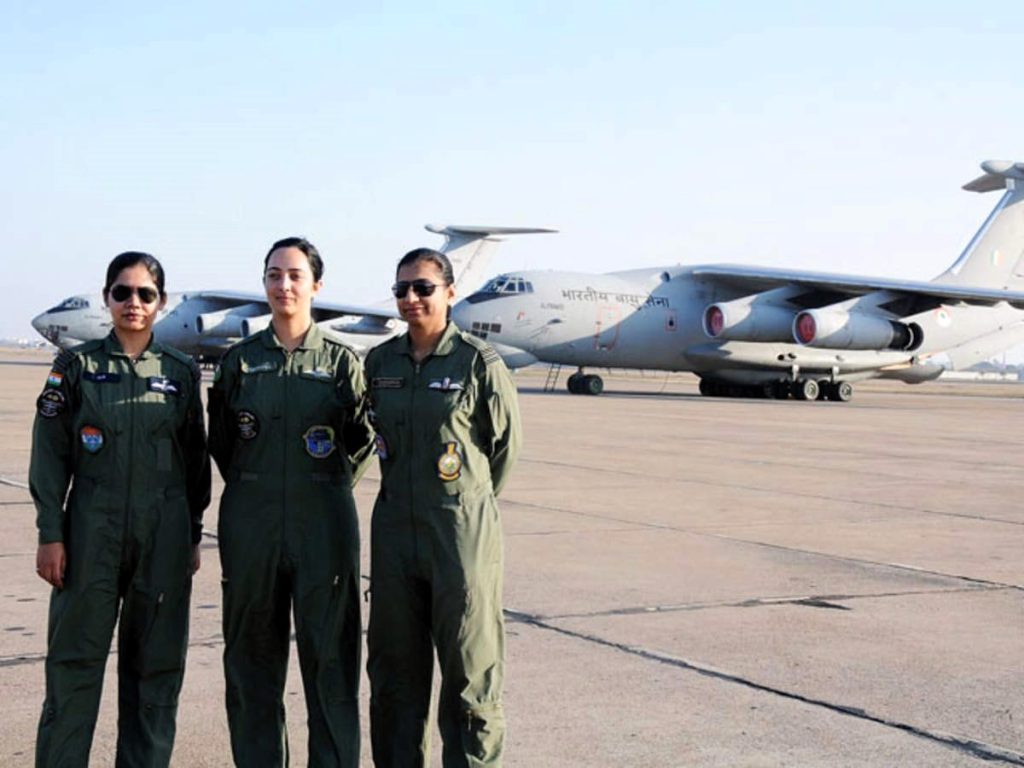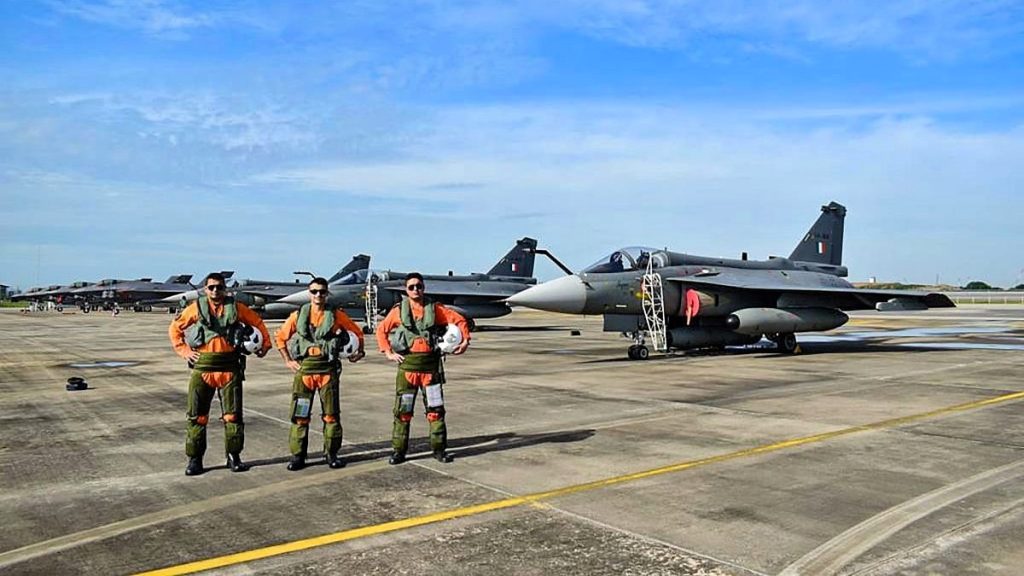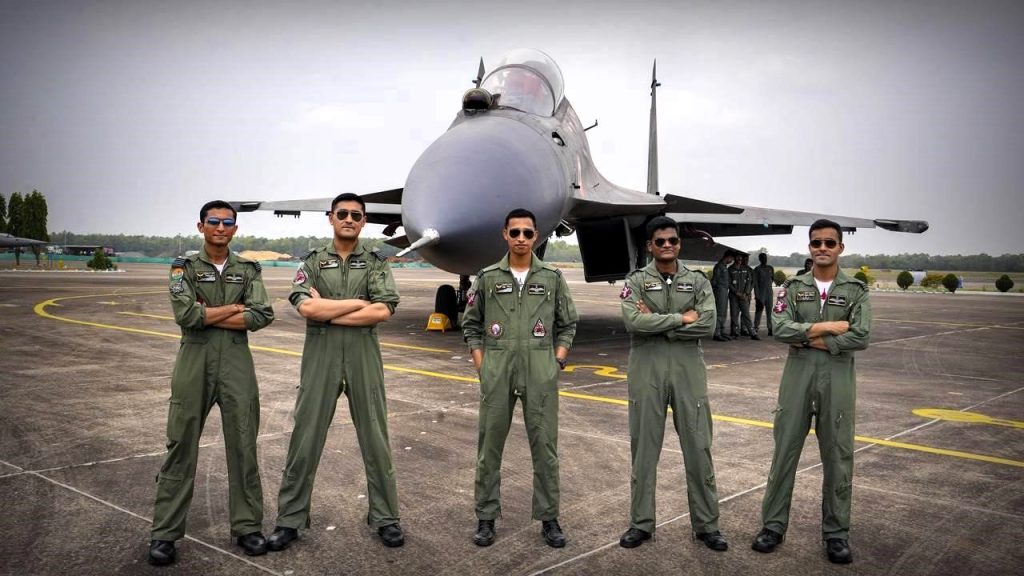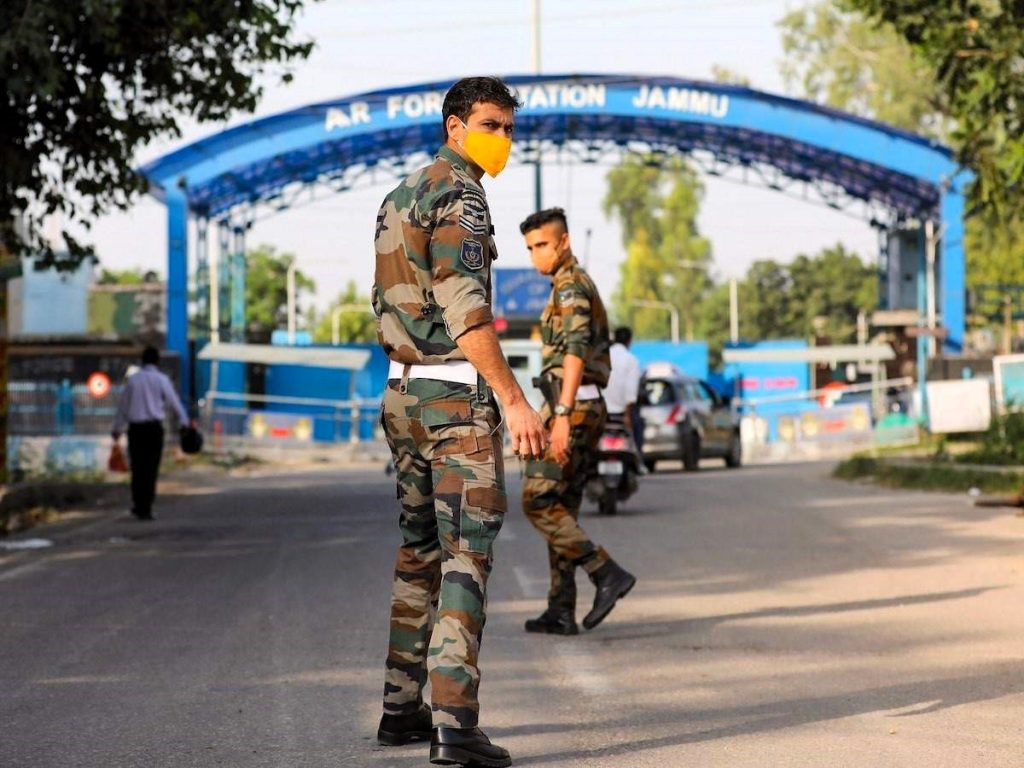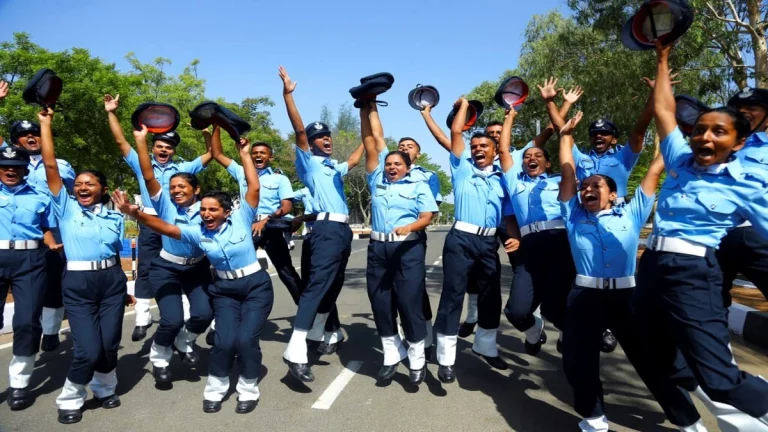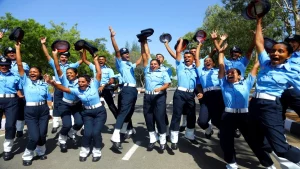The Air Force Common Admission Test (AFCAT) is a gateway for those who aspire to join the Indian Air Force (IAF) as commissioned officers. Conducted twice a year, AFCAT is a competitive exam that opens doors to a dynamic and adventurous career in various branches of the IAF. However, before you start preparing, it’s crucial to understand the eligibility criteria, especially the age limits for different branches.
What is AFCAT and Who Can Apply?
AFCAT stands for Air Force Common Admission Test, a competitive examination conducted by the Indian Air Force for recruitment of officers in various branches. This exam is held twice a year and is a vital part of the selection process for candidates wishing to join the IAF. The selection process includes three stages: Written Test, Air Force Selection Board (AFSB) Interview, and Medical Examination.
Eligibility Criteria
To be eligible for AFCAT, candidates must meet several criteria related to age, education, and physical standards. These criteria vary depending on the branch you are applying for. This article provides a comprehensive breakdown of the minimum and maximum age limits for different branches, as well as other essential eligibility requirements.
AFCAT Minimum and Maximum Age Limit
The age limit for AFCAT varies depending on the branch you wish to join. Here’s a detailed breakdown:
Overall Age Limit
- Minimum Age: 20 years
- Maximum Age: 26 years
Branch-wise Age Limit
The age limits for different branches of the IAF are as follows:
| Branch | Age Limit |
|---|---|
| Flying Branch | 20 to 24 years |
| Flying Branch (CPL) | 20 to 26 years (with Commercial Pilot License) |
| Ground Duty (Technical) | 20 to 26 years |
| Ground Duty (Non-Technical) | 20 to 26 years |
Important Dates for AFCAT 2 2024
- Flying Branch: Candidates born between 2 July 2001 and 1 July 2005 are eligible.
- Ground Duty Branches: Candidates born between 2 July 1999 and 1 July 2005 are eligible.
Branch-wise Age Limits in Detail
Flying Branch
Candidates applying for the Flying Branch must be between 20 to 24 years of age. However, for those holding a valid and current Commercial Pilot License (CPL) issued by the Directorate General of Civil Aviation (DGCA), the upper age limit is relaxed to 26 years.
Ground Duty (Technical Branches)
Candidates applying for Ground Duty (Technical) branches, such as Electronics Engineering and Mechanical Engineering, must be between 20 to 26 years of age.
Ground Duty (Non-Technical Branches)
The age limit for Ground Duty (Non-Technical) branches, which include Weapon System, Administration, Logistics, Education, Accounts, and Meteorology, is also 20 to 26 years.
AFCAT 2 Vacancy 2024
For AFCAT 2 2024, the IAF has announced a total of 304 vacancies, with 237 positions for men and 67 for women. The vacancies are distributed across various branches as follows:
| Branch | Men | Women |
|---|---|---|
| Flying Branch | 18 | 11 |
| Ground Duty (Technical Branches) | ||
| – Electronics Engineering | 88 | 23 |
| – Mechanical Engineering | 36 | 9 |
| Ground Duty (Non-Technical Branches) | ||
| – Weapon System | 14 | 3 |
| – Administration | 43 | 11 |
| – Accounts | 10 | 2 |
| – Logistics | 13 | 4 |
| – Education | 7 | 2 |
| – Meteorology | 8 | 2 |
| NCC Special Entry | 10% of AFCAT vacancies |
Essential Educational Qualification
Meeting the educational qualifications is crucial for eligibility. Here are the detailed educational requirements for each branch:
Flying Branch
- At 12th Level: Must have studied Mathematics and Physics with at least 50% marks.
- At Graduation Level: Must have a degree in any discipline with 60% marks or:
- BE/B Tech degree with 60% marks.
- Cleared Section A & B examination of Associate Membership of Institution of Engineers (India).
- Aeronautical Society of India with 60% marks.
Ground Duty (Technical Branches)
Mechanical and Electrical Branches
- At 12th Level: Must have studied Mathematics and Physics with at least 50% marks.
- At Graduation Level: Must have:
- A four-year degree graduation/integrated post-graduation qualification in Engineering/Technology from a recognized university.
- Cleared Sections A & B examination of Associate Membership of Institution of Engineers (India) or Aeronautical Society of India with a minimum of 60% marks.
Ground Duty (Non-Technical Branches)
Weapon System Branch
- At 12th Level: Must have studied Mathematics and Physics with at least 50% marks.
- At Graduation Level: Must have:
- Graduation degree in any discipline with a minimum of 60% marks or:
- BE/B Tech degree with 60% marks.
Meteorology Branch
- At 12th Level: Must have studied Mathematics and Physics with at least 60% marks.
- At Graduation Level: Must have:
- BSc with Physics and Mathematics with 60% marks or:
- Graduation in Engineering/Technology with 60% marks.
Administration and Logistics Branches
- At 12th Level: Passed 10+2 in any stream.
- At Graduation Level: Graduate degree in any discipline with 60% marks.
Accounts Branch
- At 12th Level: Passed 10+2 in any stream.
- At Graduation Level: Must have a degree in any of the following:
- BCom, BBA (Finance), BMS (Finance), BBS (Finance), BSc (Finance), or qualified CA/CMA/CS/CFA.
Education Branch
- At 12th Level: Passed 10+2 in any stream.
- At Graduation Level: Must have:
- Post-graduation degree with 50% marks and graduation in any discipline with 60% marks.
Physical Standards for Men and Women
Physical fitness is essential for all candidates applying for AFCAT. The standards are as follows:
Flying Branch
- Height: Minimum height of 162.5 cm for both men and women.
Ground Duty (Technical and Non-Technical Branches)
- Height for Men: Minimum height of 157.5 cm.
- Height for Women: Minimum height of 152 cm.
Physical Fitness Routine
Candidates are advised to keep themselves in good physical condition by following a regular fitness routine that includes:
- Running: Up to 4 km in 15 minutes.
- Skipping.
- Push-ups and Sit-ups: Minimum 20 each.
- Chin-ups: Minimum 8.
- Rope Climbing: 3 to 4 meters.
- Swimming: 25 meters.
AFCAT 2 2024 Vacancy Details
The IAF has announced 304 vacancies for AFCAT 2 2024, distributed across various branches. The following table provides detailed information about the vacancies:
| Branch | Men | Women |
|---|---|---|
| Flying Branch | 18 | 11 |
| Ground Duty (Technical Branches) | ||
| – Electronics Engineering | 88 | 23 |
| – Mechanical Engineering | 36 | 9 |
| Ground Duty (Non-Technical Branches) | ||
| – Weapon System | 14 | 3 |
| – Administration | 43 | 11 |
| – Accounts | 10 | 2 |
| – Logistics | 13 | 4 |
| – Education | 7 | 2 |
| – Meteorology | 8 | 2 |
| NCC Special Entry | 10% of AFCAT vacancies |
Preparation Tips
Now that you have a comprehensive understanding of the eligibility criteria, including the age limits, educational qualifications, and physical standards, it’s time to start preparing for the AFCAT exam. Here are some tips to help you succeed:
Written Exam Preparation
- Understand the Syllabus: Familiarize yourself with the AFCAT syllabus, which includes General Awareness, Verbal Ability in English, Numerical Ability, and Reasoning and Military Aptitude.
- Study Material: Use standard books and online resources to prepare for each section of the exam.
- Practice Papers: Solve previous years’ question papers and take mock tests to get a feel of the exam pattern and improve your time management skills.
- Time Management: Develop a study schedule that allows you to cover all topics and revise regularly.
AFSB Interview Preparation
- Know the Process: Understand the AFSB interview process, which includes Screening Tests, Psychological Tests, Group Tests, and Personal Interview.
- Be Confident: Confidence is key during the interview. Practice speaking clearly and confidently.
- Current Affairs: Stay updated with current events and general knowledge.
- Physical Fitness: Maintain your physical fitness as it will be tested during the interview process.
Medical Examination Preparation
- Health Check: Ensure you meet all the medical standards set by the IAF.
- Fitness Routine: Follow a regular fitness routine to maintain your health and physical standards.
Conclusion
Applying for the AFCAT exam is a significant step towards a prestigious career in the Indian Air Force. Understanding the minimum and maximum age limits, educational qualifications, physical standards, and other eligibility criteria is crucial for a successful application. By preparing thoroughly for the written exam, AFSB interview, and medical examination, you can enhance your chances of being selected. Start your preparation early, stay dedicated, and you will be well on your way to joining the esteemed ranks of the Indian Air Force.
In conclusion, the AFCAT exam is a comprehensive and competitive process that requires dedication and preparation. With the right approach and understanding of the eligibility criteria, you can achieve your dream of serving in the Indian Air Force.
FAQs
1. What is the overall age limit for the AFCAT Exam 2024?
The overall age limit for the AFCAT Exam 2024 is between 20 to 26 years. However, the specific age limit can vary depending on the branch you are applying for.
2. Are there any relaxations in the age limit for specific categories?
No, the AFCAT does not provide age relaxation based on categories. The age limits are strictly adhered to as per the branch requirements.
3. What is the age limit for the Flying Branch in AFCAT 2024?
The age limit for the Flying Branch is 20 to 24 years. Candidates born between 2 July 2001 and 1 July 2005 are eligible.
4. What should a candidate do if they are not sure about their eligibility due to age?
Candidates should carefully check their date of birth against the eligibility criteria mentioned in the official AFCAT notification. If in doubt, they can contact the AFCAT helpdesk for clarification.
5. Can a candidate apply for more than one branch in the same application?
Yes, candidates can apply for multiple branches if they meet the eligibility criteria, including the age limits, for each branch.
